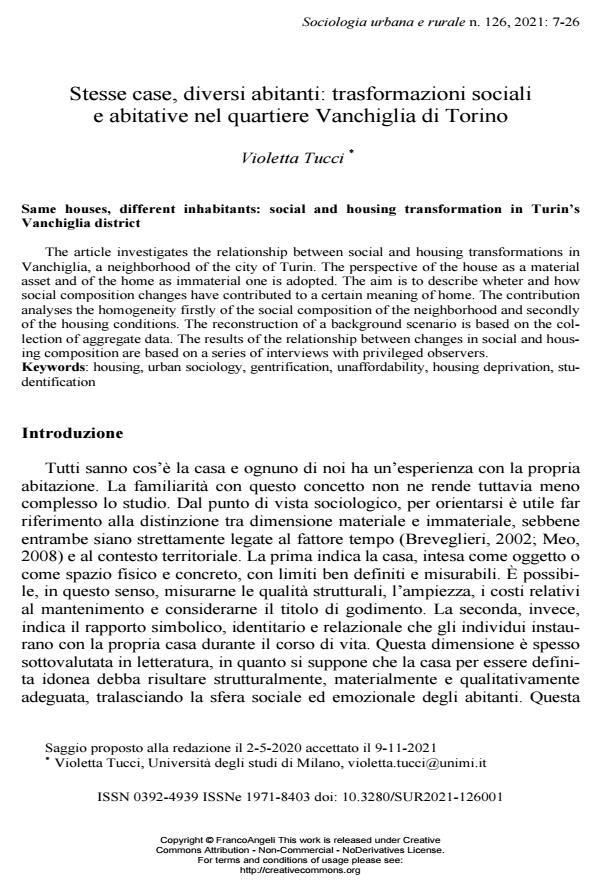Same houses, different inhabitants: social and housing transformation in Turin’s Vanchiglia district
Journal title SOCIOLOGIA URBANA E RURALE
Author/s Violetta Tucci
Publishing Year 2022 Issue 2021/126
Language Italian Pages 20 P. 7-26 File size 225 KB
DOI 10.3280/SUR2021-126001
DOI is like a bar code for intellectual property: to have more infomation
click here

FrancoAngeli is member of Publishers International Linking Association, Inc (PILA), a not-for-profit association which run the CrossRef service enabling links to and from online scholarly content.
The article investigates the relationship between social and housing transformations in Vanchiglia, a neighborhood of the city of Turin. The perspective of the house as a material asset and of the home as immaterial one is adopted. The aim is to describe wheter and how social composition changes have contributed to a certain meaning of home. The contribution analyses the homogeneity firstly of the social composition of the neighborhood and secondly of the housing conditions. The reconstruction of a background scenario is based on the collec-tion of aggregate data. The results of the relationship between changes in social and housing composition are based on a series of interviews with privileged observers.
Keywords: housing, urban sociology, gentrification, unaffordability, housing deprivation, studentification
Violetta Tucci, Stesse case, diversi abitanti: trasformazioni sociali e abitative nel quartiere Vanchiglia di Torino in "SOCIOLOGIA URBANA E RURALE" 126/2021, pp 7-26, DOI: 10.3280/SUR2021-126001